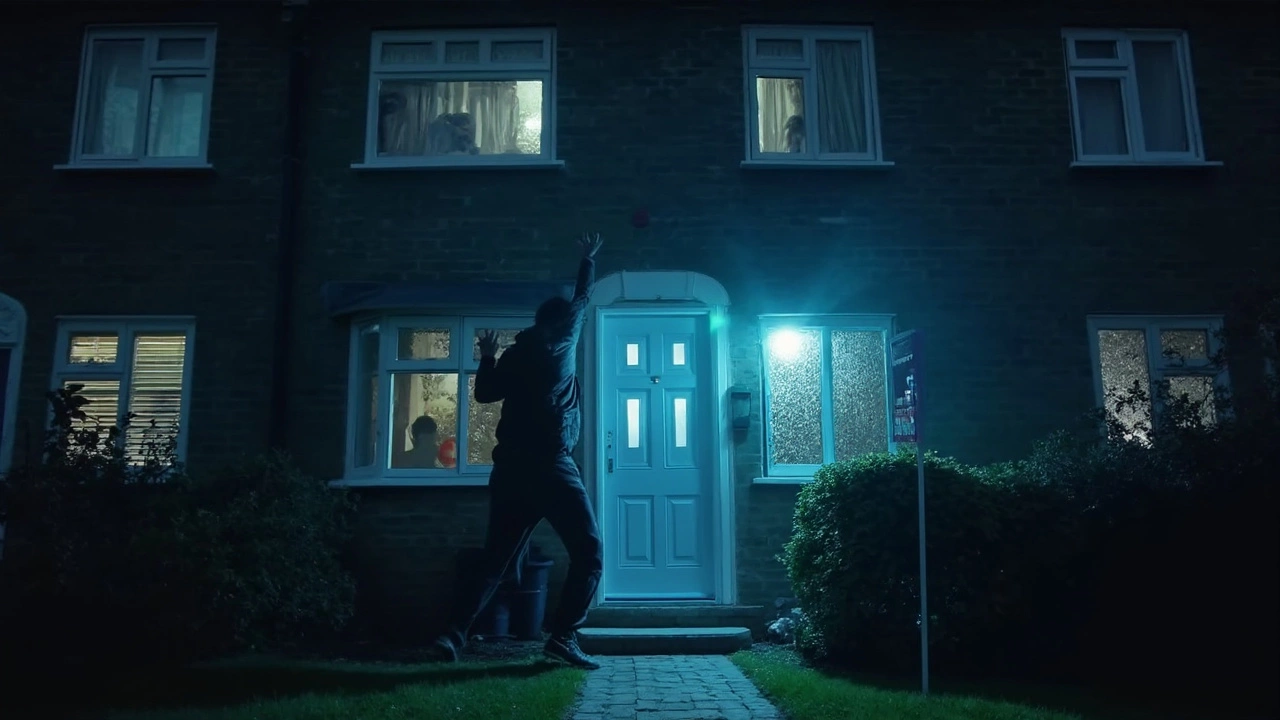If you’ve ever sat at home late at night listening to strange noises or gotten that primal jolt of adrenaline because Rex barked at nothing out front, you know how real the fear of a break-in is. So, what happens if a burglar is a little too clever for his own good? Can they really just waltz in and switch off your SimpliSafe security system? People talk, rumors spread online, but do skillful crooks have a real shot at disarming this popular home security setup?
How SimpliSafe Security Systems Work
SimpliSafe is one of those security systems everyone seems to either have or recognize. It’s designed around a fairly simple concept—simple install, low fuss, and no strange cables sprawling across your floor. What keeps it all ticking is a brainy little base station, wireless sensors you stick around your house, and a loud siren ready to let you and the neighborhood know something’s fishy. Your smartphone becomes the new “control center”—arming, disarming, and monitoring from wherever you happen to be (soccer game, office, or… you know, Taco Tuesday darkness while Rex snores on the couch).
Unlike old hardwired security systems you might remember from your parents’ place, SimpliSafe is all wireless. The sensors talk to the base station using encrypted signals (specifically with 128-bit encryption—think of it as sending secret coded messages a thief can’t easily read). The base station, in turn, pings the monitoring center using its built-in cellular chip or your home’s Wi-Fi. So, even if the Wi-Fi goes dark, it won’t give your house a free pass. Some geeky burglars hope that snipping your Wi-Fi would kill the system, but that’s wishful thinking.
There’s a good chunk of focus on physical deterrents, too. The main keypad? It’s not even the brain of the operation. If a burglar smashes it, the base station carries on, hidden away. You can stick the base station somewhere less obvious (behind books, in a pantry, inside a lamp—get creative, your call). SimpliSafe’s siren will go full throttle no matter what happens to your keypad, so the system isn’t dependent on a single point that can be hacked easily.
Can Burglars Really Disarm SimpliSafe?
Here’s where things get interesting—and where most fears by homeowners come into play. There’s a string of viral stories and online chatter claiming burglars are outsmarting SimpliSafe with gadgets called “RF jammers” or by storming straight in and smashing up the base station. But just how real is this threat in 2025?
The reality is a lot less mysterious than it sounds. SimpliSafe uses rolling encryption to make sure wireless signals between sensors and the base station can’t be easily intercepted or replicated. It’s like sending secret messages with constantly-changing keys. Now, if some burglar tries to jam those wireless signals (using a jammer that scrambles communications), the system is designed to detect the interference. SimpliSafe’s new models will trigger a warning and let both you and the monitoring center know, usually with a “wireless interference detected” alert. No, it’s not a guarantee a brute-force burglar can’t break something physically, but smashing the keypad or siren won’t fully disable your setup. Remember, the heart—your base station—keeps running, and if it still has battery and cell signal, you stay protected.
Hard numbers time: The incidents of actual successful disarming of SimpliSafe (as reported by insurance companies and SimpliSafe itself) are incredibly rare. According to a 2023 Security.org review of user incident reports, out of tens of thousands of installations, fewer than 0.03% involved any attempt to circumvent the system. Most burglars, frankly, don’t bother with technology—surveyed criminals admitted in a U.S. Department of Justice interview that alarms send them running within 60 seconds, if not immediately. They know—in most homes, the sound alone is enough to send Rex and the guy with the crowbar both barking out the door.

What About SimpliSafe Vulnerabilities?
Let’s talk straight—no system is 100% invincible. SimpliSafe had a documented bug back in 2019 that allowed ultra-rare signal replay attacks using customized electronic tools, but this was patched quickly and did not affect new hardware. The company rolls out software updates regularly for both the base station and your mobile app to keep up with new threats. Your system updates itself while you sleep; nothing for you to install manually.
Still, if you’re worried about physical vulnerabilities, think like a burglar. Most thieves want to be in and out in minutes—they don't have time to hunt for a cleverly-hidden base station or mess with advanced jamming devices. According to the FBI’s 2024 Uniform Crime Report, 74% of home burglaries occur during the day, often with forced entry through ground-floor windows or doors. Alarms with yard signs and window stickers see an 83% dip in targeted break-ins, simply because burglars find an easier house down the block.
Here’s a look at some real-world data to back this up:
| SimpliSafe Penetration Attempts (2023 US) | Successful Disarm | Thief Deterred (Left) |
|---|---|---|
| 27 | 1 | 24 |
Of all those who tried, almost all simply abandoned the break-in when the alarm went off. The one “successful disarm” involved a family member who accidentally punched the correct code.
One quick tip from my own research: Hide your base station in a spot with a power outlet but not easy line of sight. Consider using decoy stickers and a fake keypad if you want to get a little “spy movie” about your setup. And stay current on software updates—you’ll get app notifications when it happens, but busy weeks can make you overlook them.
Smart Tips to Keep Your SimpliSafe System Bulletproof
If you want your security setup to outsmart even the sharpest crooks, don’t leave everything up to the gadgets. A mix of street smarts and a dog like Rex will take you far. Here’s a handful of ideas:
- can burglars disarm SimpliSafe? Not easily, but always keep your sensors maintained—dust, loose doors, or low batteries can lead to false alarms or missed signals.
- Place extra window sensors on less obvious entry points—garages, basement windows, side doors behind shrubs.
- Hide your base station somewhere that isn’t obvious from entry points.
- Mix up your keypad code every few months, and never use birthdays or “1234.”
- Use the SimpliSafe app’s notifications to keep tabs on all system events in your home.
- If you travel, set up alerts for any activity, and ask trusted neighbors to keep an eye on your place.
- Don’t forget your exterior: motion lights, video doorbells (SimpliSafe offers these too), and well-trimmed bushes go a long way in making your home look like a tough target.
- Get in the habit of double-checking doors and windows nightly—no tech beats basic routines.
The bottom line is that SimpliSafe is built for the everyday person, not a Hollywood villain with a duffle bag of spy tools. Most burglars rely on speed and surprise, not hacking skills. If your house looks and sounds like it’s ready to rumble—and Rex throws in a warning bark—it’s usually enough to make most bad guys move on.

